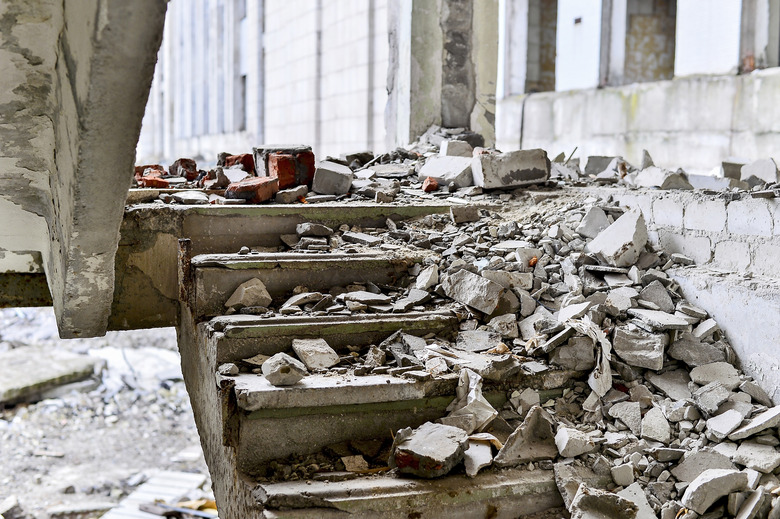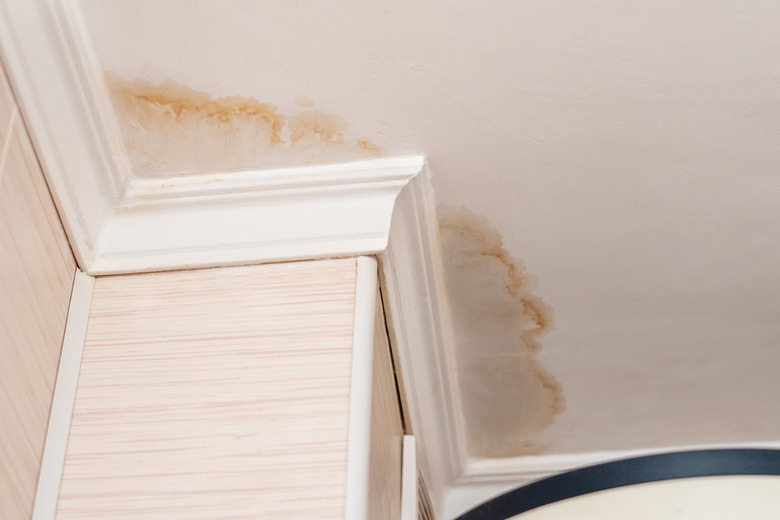What To Do When Reentering Your Home After An Earthquake — 12 Safety Tips
Experiencing an earthquake can be traumatic, and even when the quake is over, there are potential earthquake safety concerns with which you must contend. In addition to the potential for aftershocks, which can occur days or weeks after the initial shock, a host of dangers may be waiting for you when you return to your home and property. Arm yourself with valuable tips to keep yourself and your family safe when you reenter your home.
1. Ensure It's Safe to Go Home
1. Ensure It's Safe to Go Home
Before you can even think about cleaning up earthquake damage in your home, you need to ensure that it's safe for you to even be in your neighborhood amidst all of the damaged buildings. Only return to your house after your neighborhood (or your home's structure itself) has been declared safe by local public officials. If you're uncertain of the level of damage, ask a structural engineer to examine your home in close detail before you go back inside.
2. Look for Danger Signs Around the Property
2. Look for Danger Signs Around the Property
Prior to entering a home, homeowners should check for any obvious signs of danger, including fire, gas leaks and damaged wiring. Some of these dangers may only be visible once you enter your home, but make sure to inspect the exterior of the property first as an earthquake safety precaution. Do you smell gas or smoke? There may be a fire or a gas leak. Are there damaged power lines nearby? Don't approach them. Call the power company to report them.
If there is a small fire inside or around your home, put it out with a fire extinguisher. For large fires that you're unable to put out yourself, call the fire department immediately.
3. Shut Off the Gas and Electricity
3. Shut Off the Gas and Electricity
Before heading inside, shut off the gas supply at the meter but do this only if you think there may be a leak. If you need to turn the gas back on, only the gas company can do so, so make sure you turn it off only if it's necessary. Also, shut off the electrical power by either calling the electric company or powering it off via the main circuit breaker (only if it's safe to do so). This will ensure that while you're cleaning up, there will be less risk of a fire starting or of you breathing in toxic chemicals.
4. Enter the Home During the Day
4. Enter the Home During the Day
Even if it looks OK from the outside, you should assume the inside of the home is dangerous after an earthquake. Although you can't control when you'll get the go-ahead from local authorities to go inside your home, it's best to wait until daytime to reenter the structure since it will be easier to spot potential dangers.
When you reenter the home for the first time, never turn on the lights — a tiny spark has the potential to cause an explosion or fire. Use a flashlight if you need extra light. You can turn on the lights after you've confirmed that there is no risk of gas leaks or electrical hazards.
You should evacuate the house right away if you hear shifting or creaking noises, as these may indicate that the structure is unsafe and likely to fall. Evacuate immediately if you encounter a chemical spill of unknown origin or if there is a gas odor or signs of a leak, such as a broken pipe.
5. Wear Proper Footwear/Gear
5. Wear Proper Footwear/Gear
When inspecting your home and property after an earthquake, it's essential to wear sturdy shoes, as there may be broken glass and other hazardous debris lying around. If your home has suffered any level of earthquake damage, you should also be in full-length pants and a long-sleeve shirt. Wear goggles and a respirator (or N95) mask to prevent breathing in dust or hazardous chemicals. If you're beginning the actual cleanup, put on a pair of work gloves and a hard hat to protect yourself as you wade through all of the debris and start to move heavy furniture and other items around.
6. Clean Hazardous Spills
6. Clean Hazardous Spills
You may need to clean up potentially dangerous spills. For instance, cleaning products may have shifted and spilled during the quake. Clean up anything nontoxic, such as spilled food, and cover toxic substances or flammable liquids with an absorbent material, like cat litter.
7. Obtain Clean Water
7. Obtain Clean Water
In an emergency situation where tap water is not available, options for drinking water include:
- Bottled water
- Boiled water
- Supply from water heaters
- Melted ice cubes
- Canned foods, like vegetables
8. Be Careful When Cooking and Eating
8. Be Careful When Cooking and Eating
Avoid lighting matches or turning on your gas stove in case there is a gas leak. Similarly, do not use your fireplace. A damaged chimney won't be able to vent fumes, and it's not wise to start a fire if there's a risk of a gas leak. Chimneys are also very likely to experience structural damage during an earthquake. Don't walk near or around your chimney because it may fall on you.
If the power is out and you want to cook food, use barbecue and camp stoves outside to prevent carbon monoxide poisoning. Also, it's best to throw away perishable food that hasn't been properly refrigerated. It is better to be safe than sorry, so throw away food if it looks weird or smells odd or if you're not sure that it's safe to eat.
9. Use Caution When Opening Doors and Cupboards
9. Use Caution When Opening Doors and Cupboards
Be careful when you are opening cupboards and closets. Items have likely shifted and may not be secure. Unplug anything that appears to be broken or damaged to prevent a fire when the electricity returns.
10. Check for Water Damage
10. Check for Water Damage
Check for signs of water damage. During an earthquake, water lines may burst and flood areas of your home. Even if the water from the flooding is gone, the damage can leave behind bacteria and mold, which can be hazardous to your health.
The water damage cleanup process can take weeks depending on the extent of the flooding, and you may not be able to live in your home during that time. If you are able to clean up the water damage yourself, sturdy, closed-toe shoes and a mask are an absolute necessity to protect your health and safety.
11. Be Aware of Aftershocks
11. Be Aware of Aftershocks
Aftershocks are less severe than the initial earthquake, but they can still cause damage. To stay safe during aftershocks, practice the earthquake safety sequence: drop, cover and hold on.
If there is an aftershock, drop to your hands and knees and crawl toward a sturdy object, such as a desk or table. Cover your head with your arms to protect your head and neck. Hold on to the table or other shelter and move with it as needed. If there's nothing under which you can hide, go toward a wall but stay away from windows.
12. Prepare for the Next One
12. Prepare for the Next One
After the shaking stops, all of the damage has been cleaned up and your house is back to normal, the best thing to do is to go ahead and get ready for the next one. To prepare for future earthquakes, make sure that large objects are properly anchored. Bookcases, for instance, should be adequately anchored to a wall. They may still topple over during a major earthquake, but anchoring them can prevent falls during minor aftershocks.
For full disaster preparedness, you should have a full-fledged emergency plan and an earthquake emergency kit on hand, which should include a first-aid kit and enough water and food to last at least three days.
References
- Centers for Disease Control and Prevention: Preparing for an Earthquake
- ShakeOut: Drop, Cover, and Hold On!
- USGS Earthquake Hazards Program: Aftershocks
- Ready.gov: Earthquakes
- Virgnia Tech Emergency Management: After An Earthquake
- Earthquake Country Alliance: Reconnect and Restore
- Michigan Tech UPSeis: What Should I Do Before, During, And After An Earthquake?
- Centers for Disease Control and Prevention: Clean Up Safely After a Disaster
- Centers for Disease Control and Prevention: Stay Safe After An Earthquake
- University of Hawaii Maui College: Improve Safety
- California Earthquake Authority: What Should You Do After an Earthquake?
- USGS: What Do I Do AFTER an Earthquake?
- Chubb: What to Do After an Earthquake
- Occupational Safety & Health Administration: Fact Sheets on Natural Disaster Recovery — Flood Cleanup

